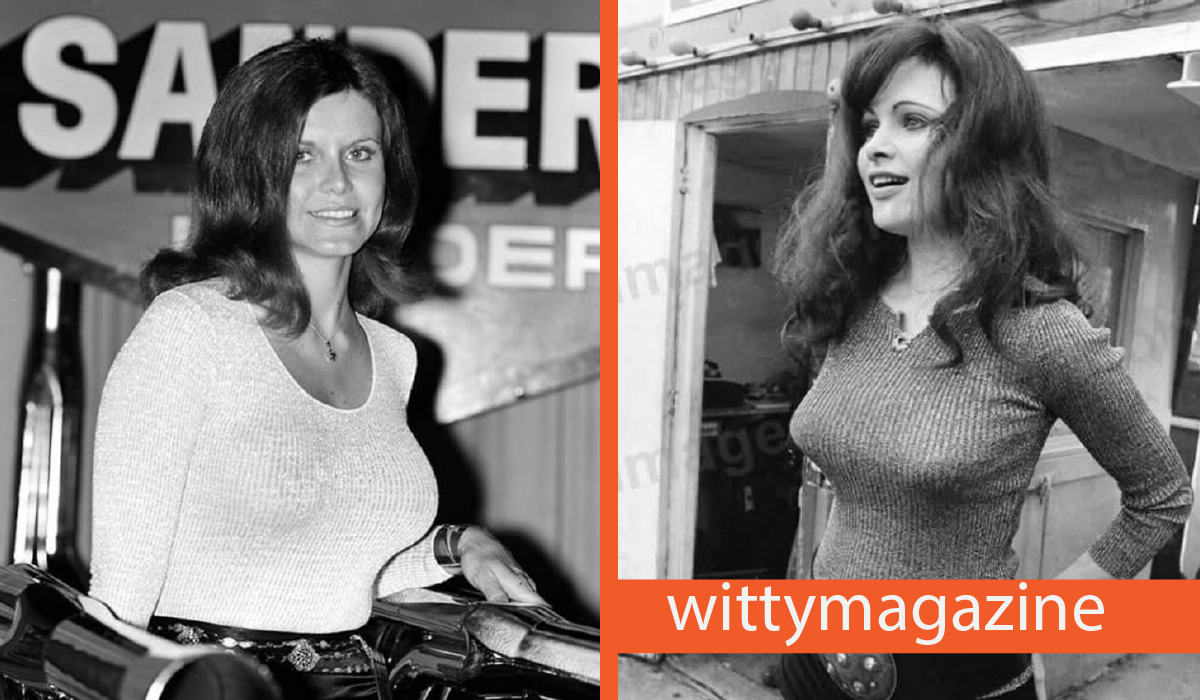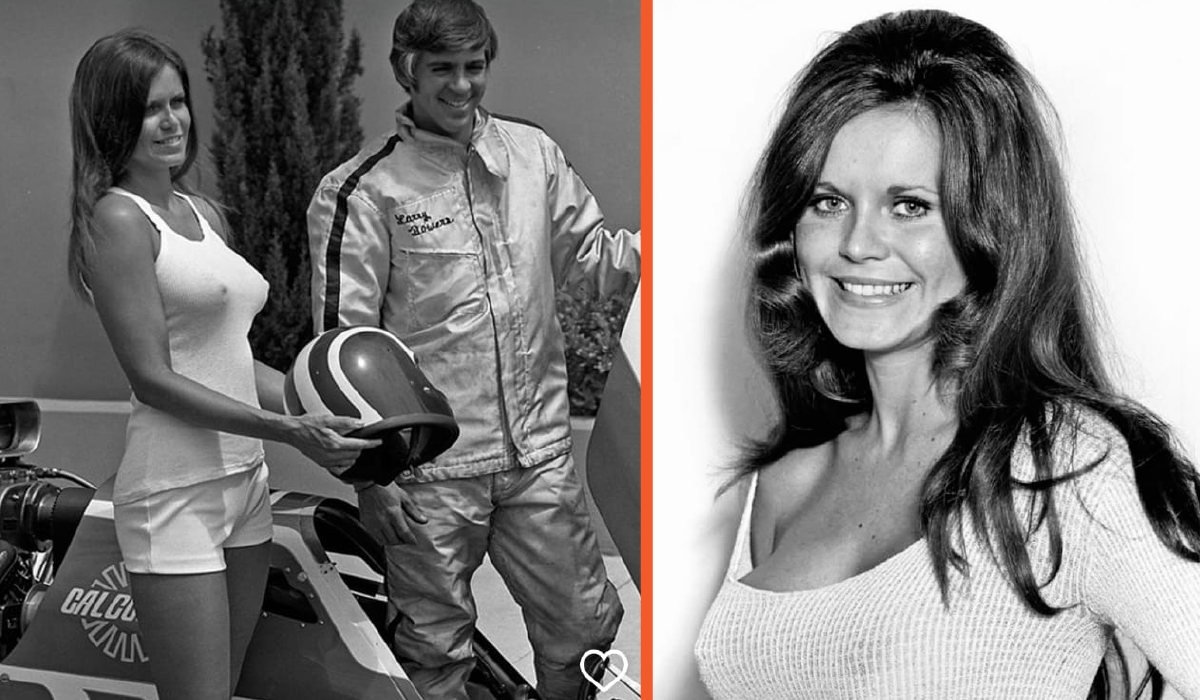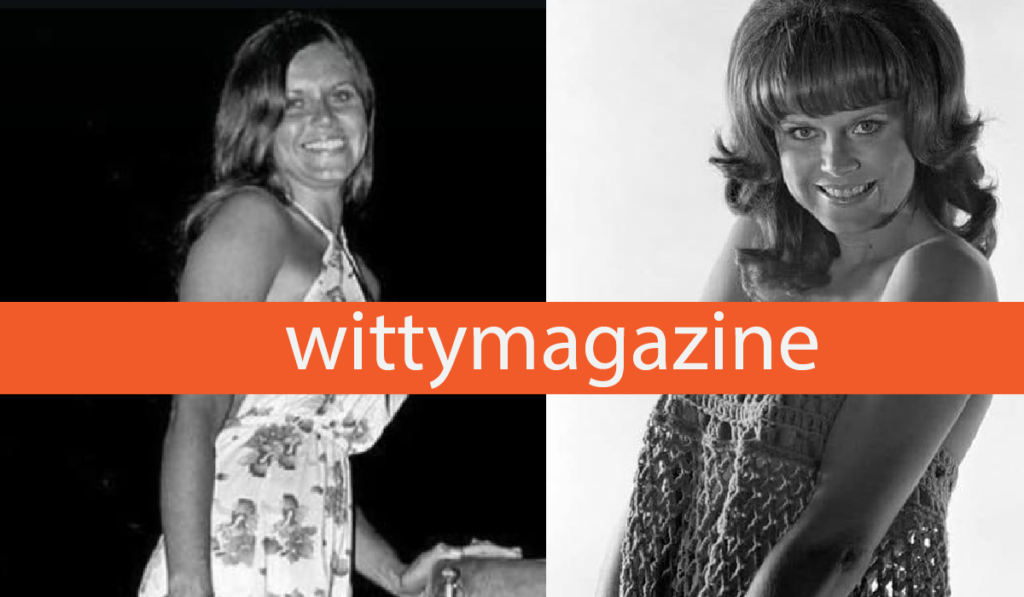Barbara Roufs was more than a name in the annals of American drag racing — she was a symbol of beauty, charisma, and cultural transformation during the golden era of motorsports in the 1970s. At a time when engines roared, fans cheered, and men dominated the racetrack, Barbara Roufs stood out as a confident, radiant figure who brought a unique blend of style, sophistication, and energy to drag racing events. Known widely as a drag racing beauty queen and trophy girl, she redefined what it meant to be part of a motorsport scene, blending glamour with the grit of high-speed racing.
This article explores the complete, untold story of Barbara Roufs — her early life, rise to fame, personal struggles, and lasting legacy — revealing how a woman who once graced the winner’s lane continues to inspire racing fans and cultural historians alike.
| Detail | Information |
|---|---|
| Full Name | Barbara Jean Riley Roufs |
| Popularly Known As | Barbara Roufs |
| Date of Birth | July 22, 1943 |
| Place of Birth | Clovis, California, USA |
| Nationality | American |
| Profession | Trophy Girl, Model, Drag Racing Beauty Queen |
| Famous For | 1970s drag racing queen at Orange County International Raceway (OCIR) |
| Father | Wayne Eldon Riley – Motorcycle racer and outdoor enthusiast |
| Mother | Thelma Ruby Riley – Beauty salon owner and church organist |
| Siblings | Vivian Deaton, James, Bruce, and Ben Gube |
| Marital Status | Married (later divorced) |
| Spouse | Donald Arthur Roufs (m. 1961 – div. 1971) |
| Children | Jet Dougherty (reportedly), possibly Bridgette Roufs |
| Height | 5 feet 5 inches (165 cm) |
| Weight | Approx. 55 kg (121 lbs) |
| Hair Color | Brown |
| Eye Color | Brown |
| Famous Photographer | Tom West |
| Titles Held | Queen of the 6th Annual U.S. Professional Dragster Championship, PDA Queen (1973) |
| Cause of Death | Reported suicide (unconfirmed) |
| Date of Death | January 25, 1991 |
| Age at Death | 47 years |
| Legacy | Remembered as an icon of 1970s drag racing and a symbol of beauty, confidence, and style |
Early Life and Family Background
Barbara Roufs was born in either 1943 or 1944 in the heart of California — a state synonymous with car culture, freedom, and innovation. Growing up in Clovis, her early environment reflected two contrasting yet harmonious influences that would later define her character: the adrenaline-fueled world of motorsports and the graceful artistry of beauty and community service. Her father, Wayne Eldon Riley, was a passionate motorcycle racer who competed at local venues such as the Kearney Bowl.

His love for competition and speed was infectious, and young Barbara grew up surrounded by the thunder of engines and the excitement of the track. Her mother, Thelma Ruby Riley, owned a local beauty salon and served as the organist for the Nazarene Calvary Bible Church — embodying poise, creativity, and dedication. These two worlds — racing and beauty — blended in Barbara’s formative years, giving her both the competitive spirit of her father and the elegance of her mother. This balance would later make her one of the most beloved public figures in the California drag racing scene.
Childhood Influences and Personality
Barbara Roufs’s childhood reflected the optimistic culture of post-war America, when California was the epicenter of both the automotive boom and the rise of pop fashion. From a young age, Barbara showed a fascination with glamour and performance — qualities encouraged by her mother’s work in the beauty industry — while also embracing the adventurous, free-spirited lifestyle her father represented. She grew up attending local race events and seeing the excitement they brought to her community, developing a sense of stage presence long before she ever stepped onto a racetrack stage.
Her personality combined grace, humor, and confidence; she carried herself with natural charisma that drew people toward her. In the 1950s and 60s, when cars became cultural symbols of freedom, Barbara was already embodying that sense of liberation — something that would later define her role as an icon in 1970s drag racing.
Entry into the Drag Racing Scene
Barbara Roufs’s journey into drag racing began not as a driver but as a trophy girl — a role that, at the time, was both glamorous and highly visible within motorsports. Trophy girls were responsible for presenting awards to winners, engaging with the audience, and representing sponsors at major racing events. While many women who took on this role were young models or local beauty queens, Barbara stood apart because she was around 29 years old when she entered the racing scene — older, more self-assured, and radiating maturity that fans and racers admired.
During the late 1960s and early 1970s, drag racing was booming in Southern California, especially at venues like the Orange County International Raceway (OCIR), where Barbara quickly became a recognizable face. Her warm smile, impeccable fashion sense, and lively spirit made her one of the most photographed and beloved figures at the track. Rather than being a mere background presence, she transformed the role into something powerful and aspirational.
Rise to Fame: The Drag Racing Queen
Barbara Roufs’s rise to fame was both swift and unforgettable. Her first major public recognition came when she was crowned Queen of the 6th Annual U.S. Professional Dragster Championship at OCIR, an event that drew huge crowds and cemented her image as the face of drag racing glamour. In 1973, she was further honored as the Professional Dragster Association (PDA) Queen, a title that solidified her legacy as the most admired trophy girl of her time.
Beyond simply presenting trophies, Barbara became part of the racing family — chatting with drivers, posing for promotional shoots, and embodying the excitement of the sport. Her professionalism and confidence challenged the stereotype of trophy girls as mere ornaments; instead, she became a respected ambassador for motorsports. Promoters and sponsors often featured her in advertisements and posters, recognizing the magnetic appeal she brought to every event.
More From Info: Taryn Van Dyke: The Untold Legacy Of Hollywood’s Quiet Star
The Signature Style and Image of Barbara Roufs
Barbara Roufs’s image was inseparable from the vibrant fashion and energy of the 1970s. Standing tall with her long, straightened hair, radiant smile, and confident walk, she epitomized the California dream. Her wardrobe — go-go boots, short shorts, crop tops, and colorful miniskirts — captured the essence of the decade’s bold fashion while fitting perfectly into the thrill of the racetrack environment. She exuded the same spirit that defined icons of the era: freedom, youth, and individuality.
Her presence transformed the role of trophy girls from simple decorative figures to cultural icons who symbolized empowerment and modern femininity. Compared to her contemporary Jungle Pam Hardy, Barbara’s elegance leaned more toward classic glamour, while still maintaining the rebellious energy of the motorsport world. Her style wasn’t just clothing — it was a statement of confidence and authenticity that resonated deeply with fans and photographers alike.
Collaboration with Photographer Tom West
One of the most significant reasons Barbara Roufs remains remembered today is her collaboration with the late Tom West, a celebrated photographer of drag racing’s golden era. Tom West had a gift for capturing the spirit of motorsports — the speed, the smiles, and the personalities that defined it. Through his lens, Barbara’s charisma came alive in countless photographs that are now treasured by collectors and fans around the world.
These photos showed her laughing beside dragsters, presenting trophies, and interacting warmly with racers — candid moments that revealed both her beauty and genuine enthusiasm for the sport. Decades after her passing, when Tom West’s archives resurfaced online, they sparked a renewed appreciation for Barbara Roufs, introducing her to new generations who had never experienced the thrill of 1970s drag racing firsthand. His work ensured that Barbara’s legacy, once nearly forgotten, would continue to live on in vivid color.
Cultural Impact on Motorsports and Fashion
Barbara Roufs’s influence went far beyond the racetrack. She became a cultural symbol of change, representing how women were increasingly visible and influential in areas once dominated by men. In an era defined by both the feminist movement and the rise of pop culture, Barbara perfectly embodied the merging of strength, elegance, and individuality.
She brought fashion to motorsports, introducing a new visual appeal that made events more exciting and relatable to wider audiences. Her look — casual yet glamorous — influenced how other promotional models dressed at car shows and racing events for years to come. Beyond fashion, Barbara helped humanize drag racing, making it more than just a mechanical competition; she added warmth, charm, and storytelling to the high-octane spectacle, inspiring countless women to take pride in their presence in the sports industry.
Personal Life: Marriage and Motherhood
Barbara Roufs’ Marriage
Barbara Roufs’s personal life was as fascinating as her public persona. In 1961, she married Donald Arthur Roufs, beginning a new chapter filled with hope and companionship. Their marriage reflected the optimism of early 1960s California — a time of dreams, growth, and new beginnings. However, as her career blossomed in the fast-paced drag racing world, the couple eventually faced challenges that led to their divorce in 1971.
Despite the end of their marriage, Barbara remained graceful and dignified, choosing to focus on her family and professional ambitions rather than public attention. Her experience as a wife during her rise to fame taught her independence and strength, qualities that shone throughout her career.
Barbara Roufs as a Mother
Beyond the cameras and racetracks, Barbara Roufs was a devoted mother who cherished her family deeply. She had at least one daughter, reportedly named Jet Dougherty, though some records also mention another daughter, Bridgette Roufs. Despite the challenges of balancing public life with motherhood, Barbara maintained a nurturing and protective presence in her child’s life.
In 2016, her daughter Jet spoke publicly online, expressing gratitude to fans for keeping her mother’s memory alive and sharing that Barbara’s happiest years were spent at the racetrack surrounded by friends and fans. This heartfelt acknowledgment revealed a softer side of Barbara — a woman who, despite fame, remained grounded by love for her child and family values. Her legacy as a mother continues to reflect her warmth, compassion, and humanity.
The Tragic Death of Barbara Roufs
Barbara Roufs’s story took a heartbreaking turn in January 1991, when she passed away at the young age of 47. Reports suggest that her death was the result of suicide, though the full circumstances were never publicly disclosed. Her passing shocked fans, friends, and the drag racing community that had once celebrated her luminous energy.
Many found it difficult to reconcile the cheerful woman seen in photographs with the internal struggles she may have faced. Her death serves as a somber reminder of the human side of fame — that behind the dazzling smiles and bright lights often lie silent battles. Even decades later, discussions about her life emphasize the importance of mental-health awareness, particularly among public figures who must constantly balance image and identity.
Barbara Roufs’s Legacy in Drag Racing
Despite her untimely death, Barbara Roufs’s impact on drag racing continues to be felt. She was one of the first women to make the trophy girl role both respected and iconic, paving the way for future generations of women in motorsport promotion, media, and event hosting. Her legacy lies not just in her photographs but in how she helped reshape public perception — proving that passion, personality, and professionalism mattered as much as physical beauty.

To this day, vintage racing communities remember her as the “Queen of the Golden Era,” a figure who brought humanity, warmth, and sparkle to the racetrack. Collectors still trade posters and memorabilia bearing her image, and her name often appears in nostalgic discussions of 1970s drag racing. Barbara Roufs became not only a face of her time but a lasting emblem of what made motorsport culture so unforgettable.
Barbara Roufs and Internet Revival
In the digital age, Barbara Roufs has found new life on the internet. Her photographs are widely shared across social-media platforms like Pinterest, Instagram, and Reddit’s r/OldSchoolCool, where fans celebrate vintage Americana and racing history. These posts have introduced her to audiences born decades after her death, showing that her influence transcends time.
Many search online for “Barbara Roufs Wikipedia,” though no official biography page yet exists; instead, her story lives on through fan blogs, forums, and tributes. Each new generation that discovers her is captivated by her charisma and timeless elegance, proving that true icons never fade — they evolve through memory and admiration.
The Unspoken Lessons
The story of Barbara Roufs carries profound lessons about fame, identity, and emotional well-being. Her life shows how the glow of public admiration can sometimes conceal deep personal struggles. In today’s world, where visibility through social media mirrors the attention she once received on racetracks, Barbara’s story feels strikingly relevant. It reminds us to look beyond surface beauty and recognize the humanity of those who live in the spotlight.
Her journey encourages empathy, awareness of mental-health challenges, and respect for individuals whose private battles remain unseen. By remembering her not only for her glamour but also for her humanity, fans ensure that Barbara Roufs’s memory continues to inspire kindness and understanding.
How Barbara Roufs is Remembered Today
Today, Barbara Roufs is remembered with affection and admiration by drag racing enthusiasts, vintage-car collectors, and motorsport historians. Her photographs are displayed at racing exhibitions and automotive museums that celebrate the 1970s golden age of drag racing. Online fan communities continue to share stories, magazine clippings, and images that capture her radiant energy.
Many describe her as a “snapshot of a perfect moment in racing history” — a time when cars, culture, and charisma collided. Every reposted photograph, every comment from a nostalgic fan, keeps her story alive. She is remembered not only as a trophy queen but as a cultural figure who represented the fun, freedom, and optimism of her generation.
Why Barbara Roufs’s Story Still Matters
Barbara Roufs’s story matters because it transcends racing — it is about evolution, courage, and the transformation of women’s roles in public life. In the 1970s, when female participation in motorsports was minimal, Barbara proved that women could be central figures in the narrative of speed and success. Her legacy reflects the shifting gender dynamics of her era, the rise of individuality, and the lasting impact of charisma in shaping public culture.
Understanding Barbara’s life offers insight into how sports and fashion intersected to form cultural history, making her story not only nostalgic but historically significant. She remains a timeless reminder that passion and personality can leave marks far deeper than fame.
Conclusion
Barbara Roufs’s life was a mixture of glamour, grace, and quiet tragedy — a journey that began in the sun-drenched tracks of California and ended far too soon. Yet her impact on drag racing and popular culture endures. She turned the simple title of trophy girl into a role of influence, beauty, and empowerment, capturing the spirit of an entire era.
As the decades pass, her photographs, stories, and the admiration of fans ensure that her memory will never fade. Barbara Roufs remains the radiant face of drag racing’s golden age — a woman whose spirit continues to race through time, reminding us that legends never truly stop shining.
FAQs About Barbara Roufs
1. Who was Barbara Roufs?
Barbara Roufs was an American drag racing trophy girl and model who rose to fame during the 1970s. Known for her beauty, confidence, and charisma, she became an iconic figure at California’s Orange County International Raceway (OCIR). Her role as a trophy queen helped define the glamour and spirit of the golden era of drag racing.
2. What was Barbara Roufs famous for?
Barbara Roufs became famous for being the queen of the 6th Annual U.S. Professional Dragster Championship and the 1973 Professional Dragster Association (PDA) queen. She represented a new era of motorsport culture, blending fashion, personality, and energy, which made her one of the most photographed and admired women in drag racing history.
3. Did Barbara Roufs ever pose for nude photos?
There is no verified evidence that Barbara Roufs ever posed nude for any magazine or official publication. Some vintage pin-up style photos taken by photographer Tom West are often mislabeled online, but these were artistic, promotional images typical of the 1970s racing scene — not explicit or inappropriate.
4. How did Barbara Roufs die?
Barbara Roufs tragically passed away in January 1991 at the age of 47. Reports suggest that her death was due to suicide, though official records remain limited. Her passing shocked the drag racing community, which remembered her for her radiant energy, professionalism, and lasting influence on the sport.
5. What is Barbara Roufs’s legacy today?
Barbara Roufs is remembered as a symbol of 1970s drag racing glamour and one of the first women to elevate the role of trophy girls from decorative figures to cultural icons. Her timeless photos, confident style, and joyful spirit continue to inspire motorsport fans, vintage car enthusiasts, and historians around the world.


